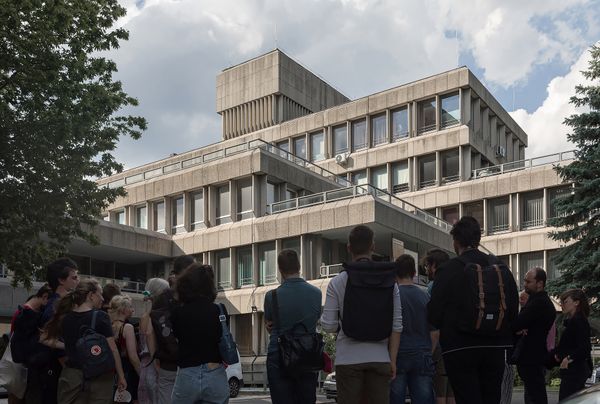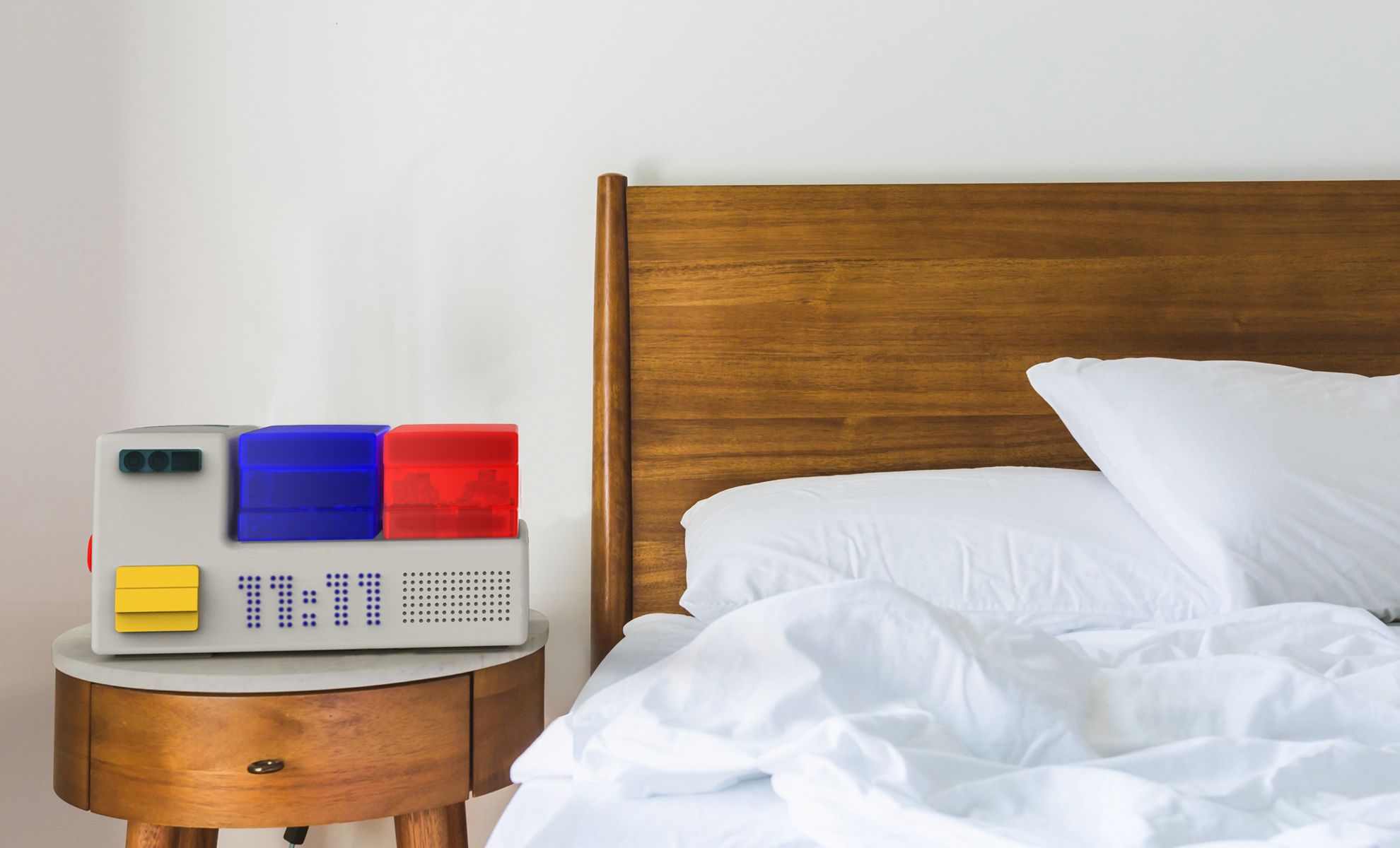As we age, our environment and even the simplest everyday task may become a challenge or a source of problems. Viktória Horváth wishes to help the elderly tackle these challenges with her intelligent and customized set of objects for their homes, thus providing a safe living environment for the elderly. Meet the Odin!
Your device ‘Odin’ came from a personal purpose; you have been surrounded by old people since you were little, which has a significant influence on your design approach, too. What kind of situations and problems does your smart object set tackle: in what does Odin help exactly?
The simplest and most ordinary motions, our unchanged environment or the arrangement of our furniture could all become sources of problems as we age. A high doorstep that we used to step over easily before could prove to be a hindrance in advanced age if we start to shuffle. It could also happen that we feel sick suddenly and we can’t find our phones or our medication to take care of ourselves. We can also face challenges due to the location of the socket, because we find it hard to bend down. I created my device “Odin” to resolve these ordinary, tiny yet essential challenges. The Odin is a smart object set providing light and sound-based assistance, on which we can count on as a partner in everyday life.
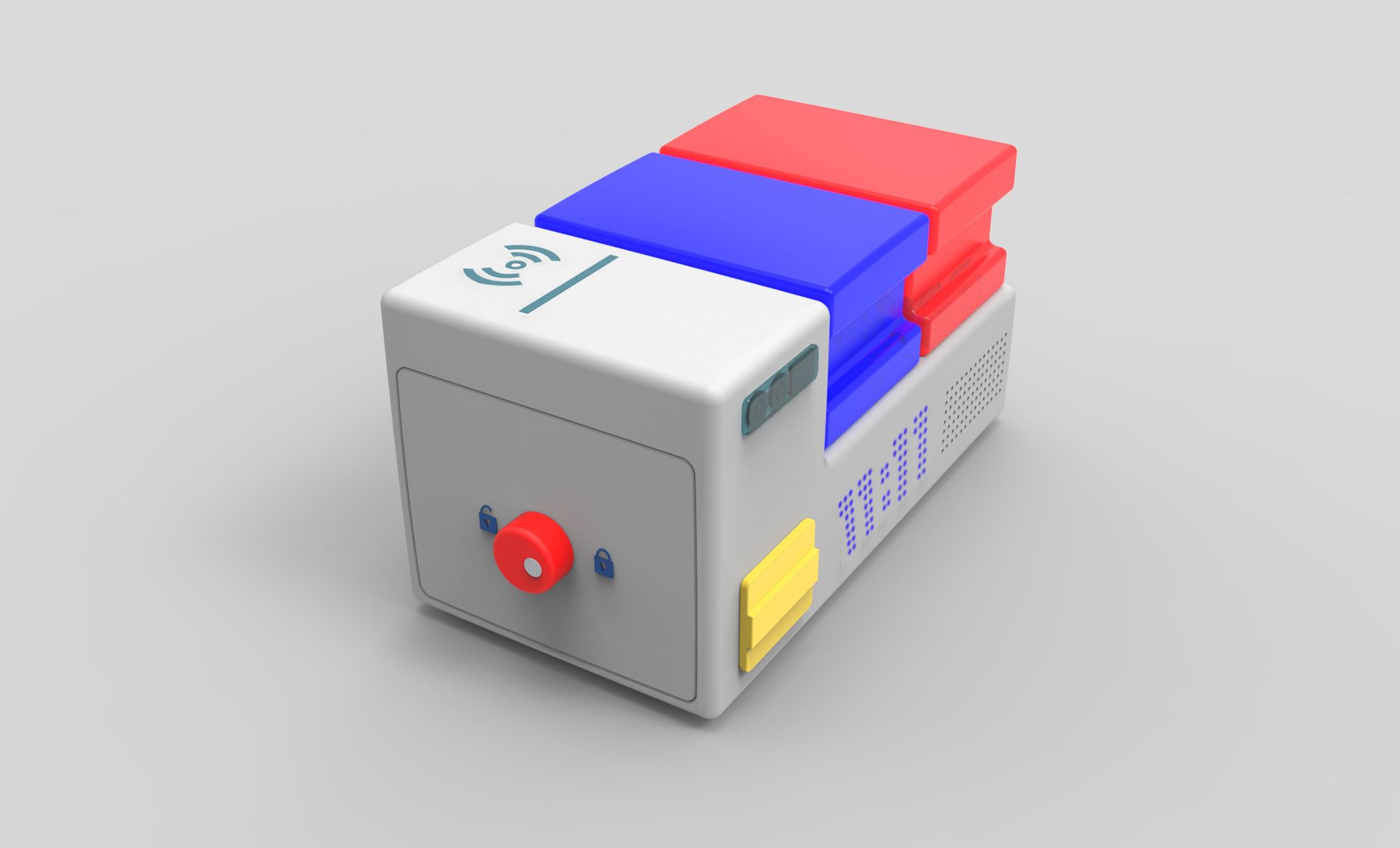
The topic required in-depth and complex research, you had to consider many factors and details in the course of your work. How did the design process go exactly? What are the main functions of the Odin?
The design process was preceded by in-depth personal interviews. I visited all my interview subjects in their homes, where I recorded the conversations. I decided not to apply an online questionnaire, because I thought it was a topic and a situation that required us to sit down in person to talk to the members of the target group and in the meantime we could also observe how they move in their home environment and what habits they have. Not to mention the fact that I obtained information in terms of body language, connection with objects and series of motions that are extremely valuable from the point of design and an online questionnaire would never allow me to do that. Some people allowed me to document their home environment with photos, including their night stands playing a lead role – which proved to be one of the main starting points of my set, together with the objects placed on the same.

This is how an intelligent storage device was created at first, with three units. The first unit is a built-in automated medication dispenser, providing continuous control over taking one’s pills, and it also signals to an authorized person through an application if either of the pills start to run out.
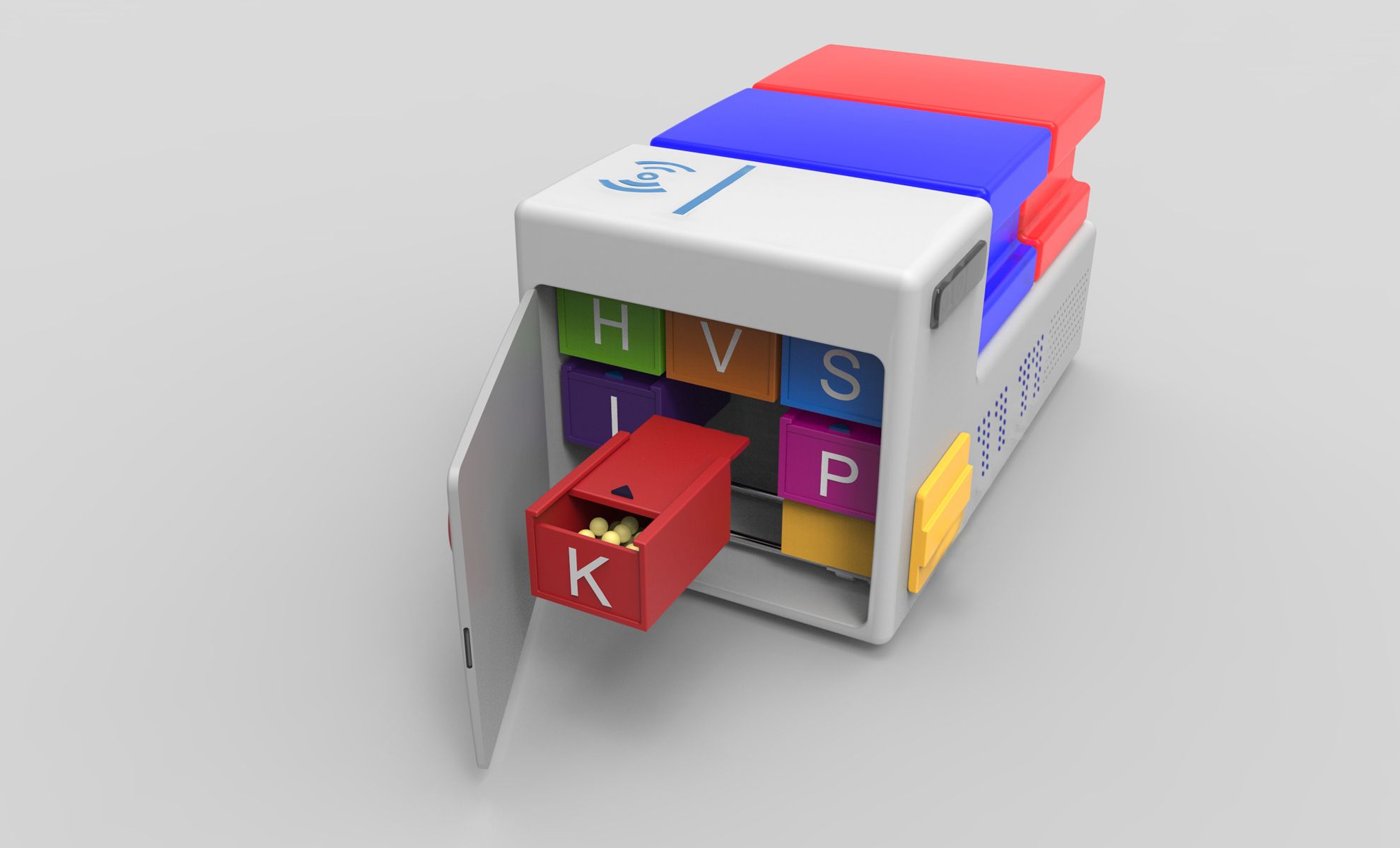
I fixed the other two container units with hinges and outfitted them with lids. These two containers can hold the things important for the given person, allowing them to group them into two categories. I found three important categories over the conversations that matched in all three interview subjects. The first one is medicine, the second is the category of personal and emotional objects, and the third one contains creams and cosmetics products. If the user only needs one of the units, they can address such unit and it will light up. This way, the users can know rapidly and unambiguously where the object they are looking for is.
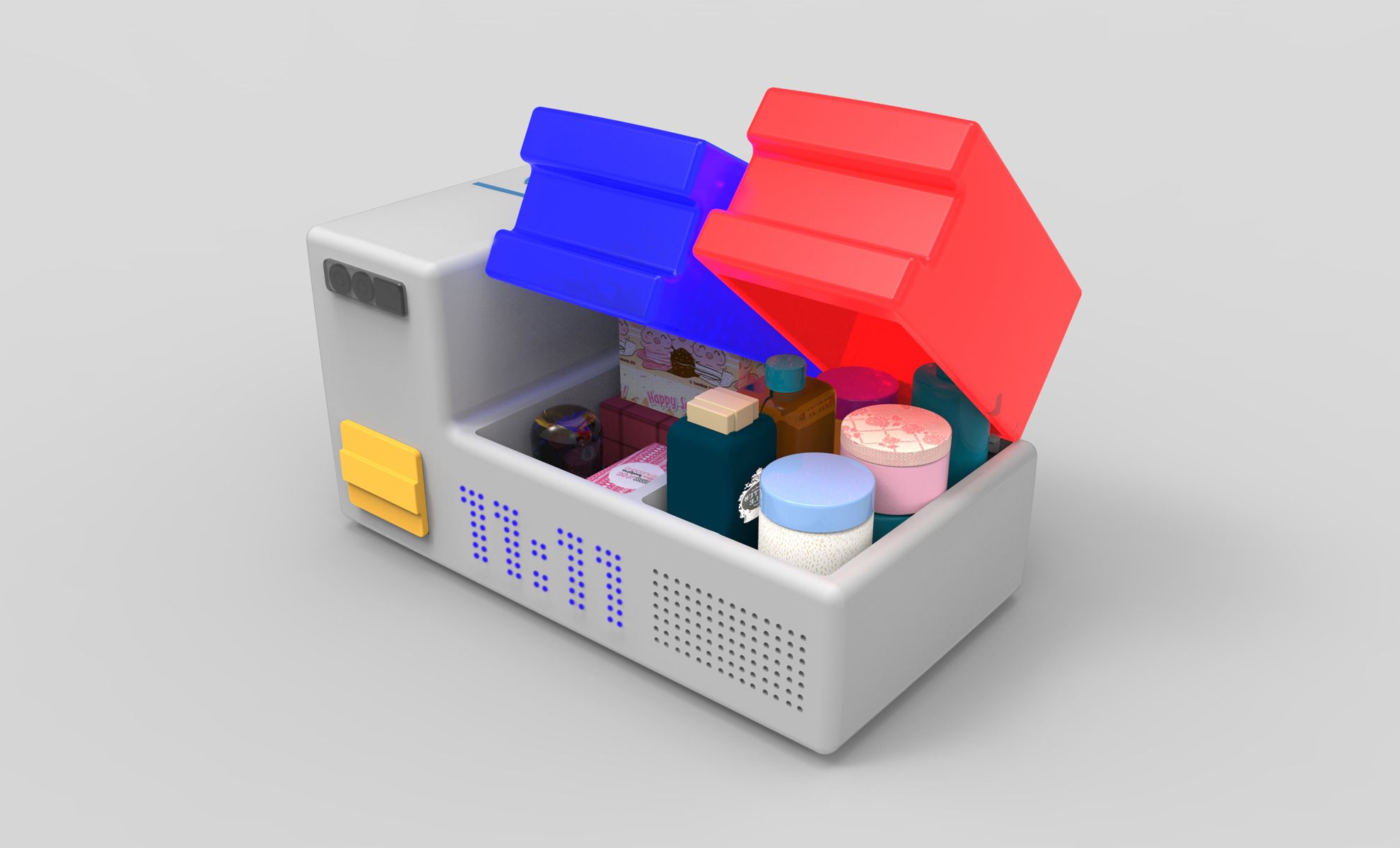
In addition to the storage device, the set of objects is further complemented by a smart projector facilitating navigation in space: the device projects a red arrow in front of its user thus leading them in the space, and avoiding the potential sources of accidents or situations including falling in the dark or tripping over a chair.
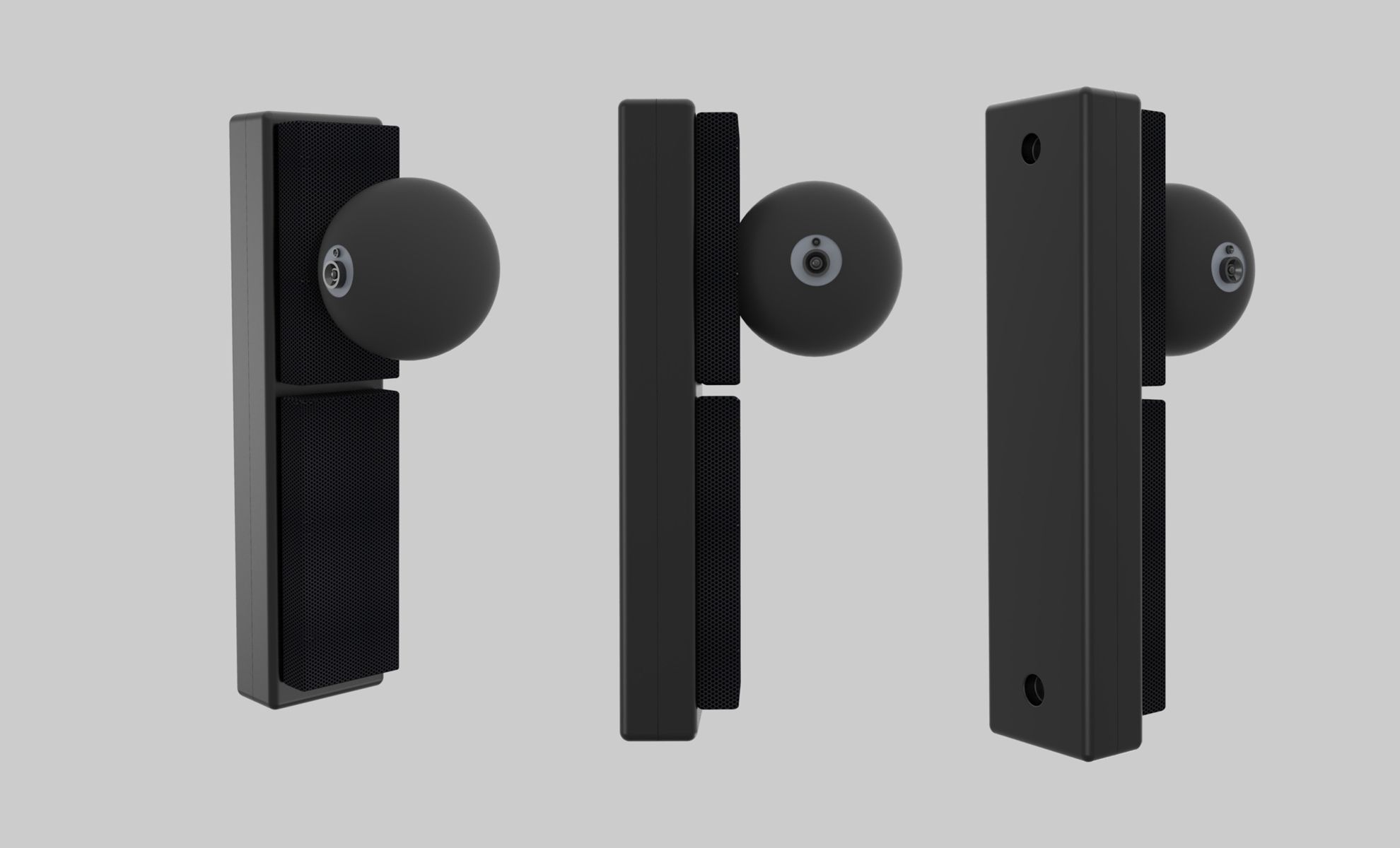
Your storage units have a unique design, and have a sort of retro feel to them. What gave the basis of your inspiration?
I was immensely influenced by old sci-fi movies that showed the members of my target group back in the day how the future (that is, the present) would look like and what tools and solutions would appear in everyday life in a utopian manner. My sources of inspiration included Woody Allen’s Sleeper and Stanley Kubrick’s 2001: A Space Odyssey.
I examined the object culture of these films in-depth, and I wanted these characteristic features to recur in Odin’s design. This is how I ended up opting for the box-like, simplistic look, complemented with large, colorful buttons. Vivid and easily detectable details are justified by deteriorating vision, making it clear which part of the object serves what purpose and how it should be used – this is why I decided to stay away from complex shapes.

The objects displayed in old sci-fie movies are sort of predecessors or forerunners of today’s intelligent devices. Moreover, the Odin also resembles the smart gadgets displayed in these movies in terms of functions, such as verbal communication and projected navigation solutions.
Your smart object set not only supports the elderly in a direct, but in an indirect manner, too. You also considered the development of an application necessary as an additional accessory.
Yes, the application is connected to the Odin, and so the relatives can get up-to-date information about the condition of their family member on a continuous basis. In addition, the person of advanced age can also send an alert through the application in case there is a problem, but they can also indicate additional needs, comments and potential attacks, too– this way, the Odin also functions as a smart home security system.
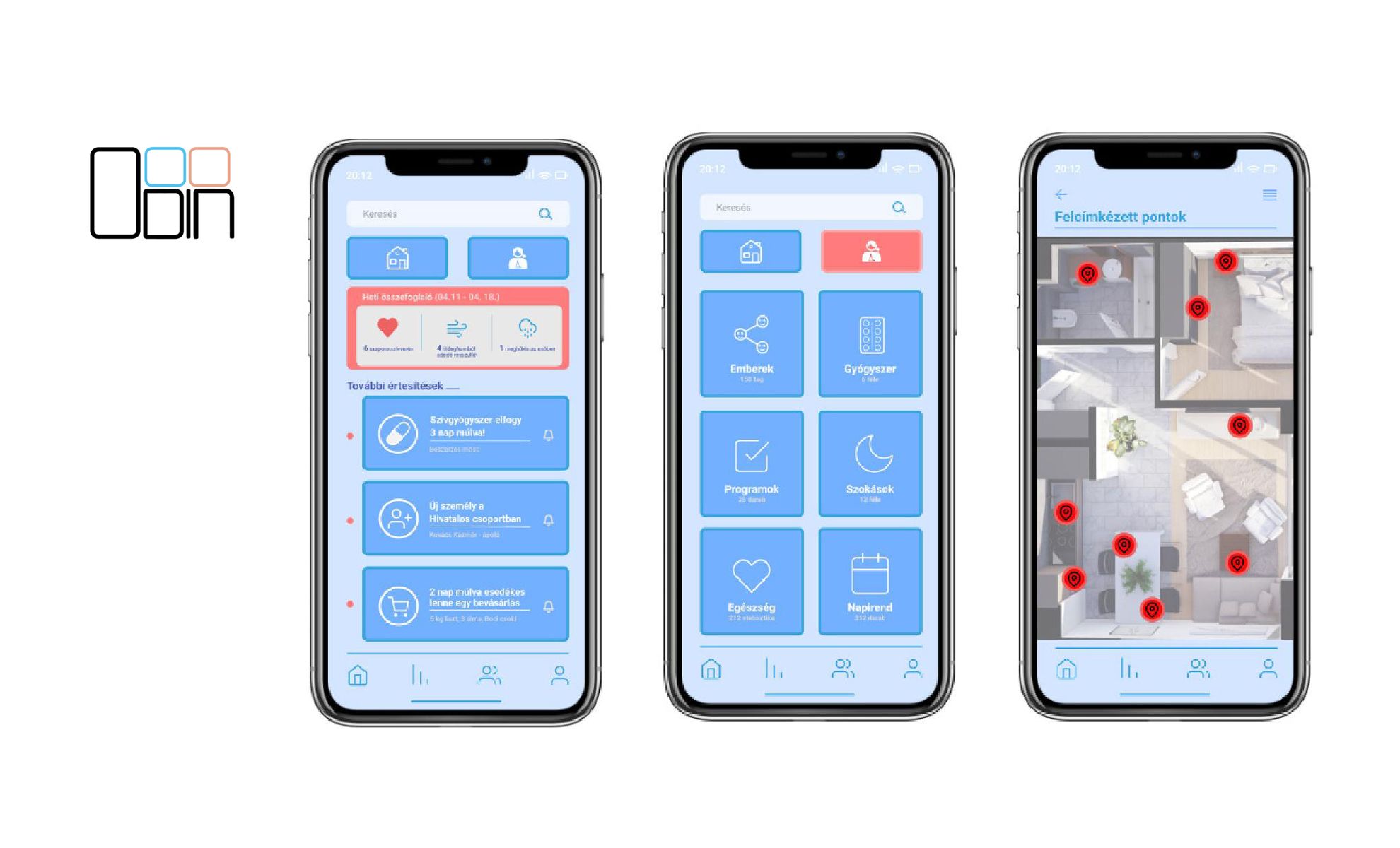
Adjusting to new situations is becoming more and more difficult for the elderly, and they also have a varied approach towards receiving help. How did the persons subject to your research welcome the idea of Odin, would they use the smart services you created?
To my greatest joy, the idea received a positive welcome. Those who were a bit uncertain at first or were a bit sceptic about the idea soon grew to like the simplicity, message and purpose of the device, that is to allow them to live autonomously, independently and safely at old age.

What other potentials do you see in your product; do you think the concept of your object set could be adapted for another target group?
It came up already during the semester that the elderly might not be the sole potential target group, as the set could provide reliable assistance to people with disabilities too, even young people. Not to mention the fact that any person without a disability could find themselves in a situation where they would need a service similar to that offered by the Odin.
Supervisor: Balázs Püspök
Thesis consultant: Eszter Babarczy
Diploma project consultant: Ákos Csertán
Viktória Horváth | MOME Diploma | Behance
Our INCLUSIVE article series presents projects that raise awareness to the society-shaping role of design and that promote the social visibility of people with disabilities and their self-determination through the means of inclusive design.
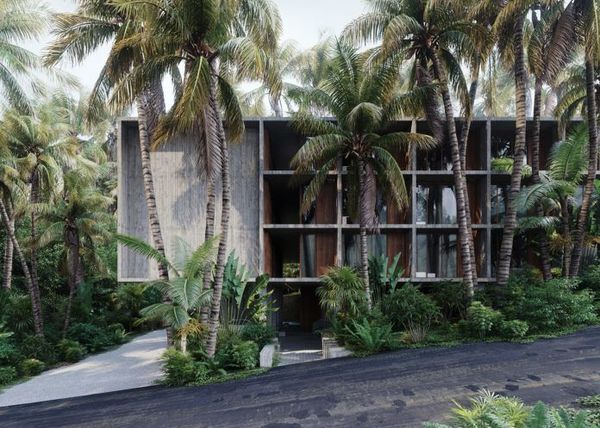
Student housing in the Caribbean | Project Grenada
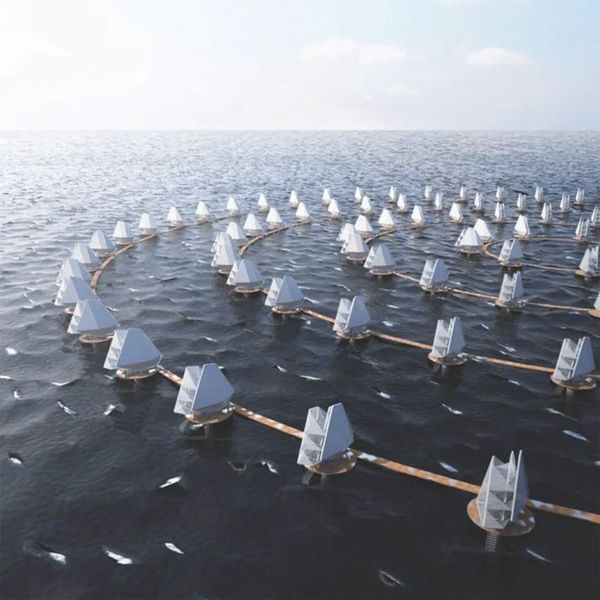
Houses floating on the ocean
